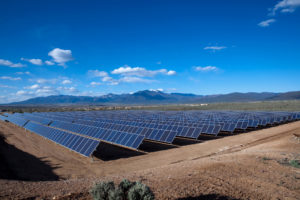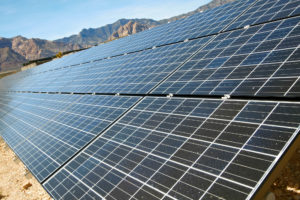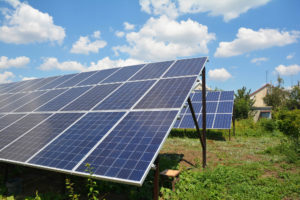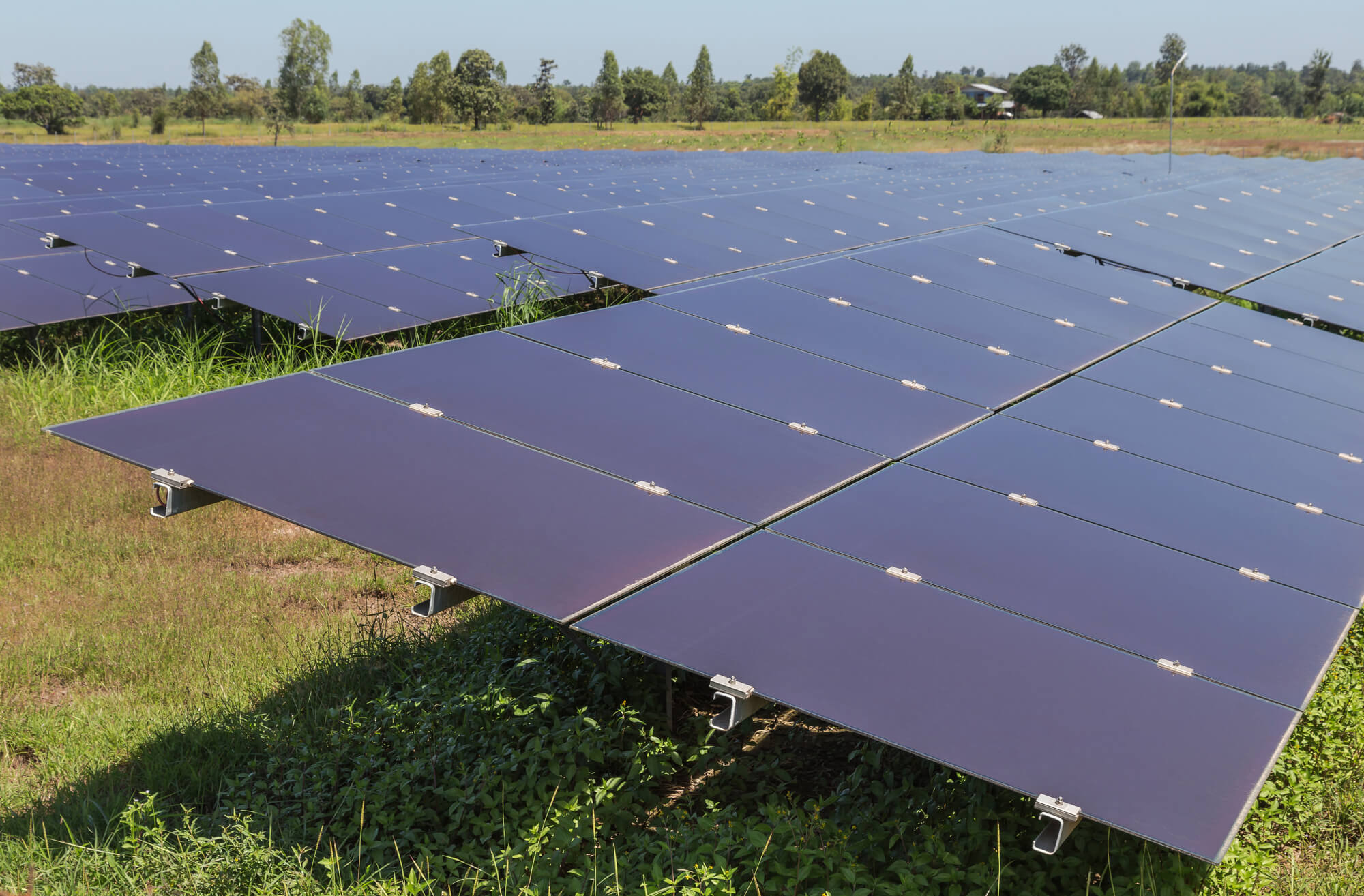Solar power systems have gained immense popularity as the world shifts towards clean and renewable energy sources. Solar panels are becoming an integral part of the sustainable energy landscape, harnessing the abundant power of the sun. In this article, we will delve into the crucial aspects of ground preparation and foundation for solar panel arrays, ensuring the longevity and efficiency of your solar power system.
Contents
- 1 Key Takeaways
- 2 Solar Power System Overview
- 3 Ground Site Selection
- 4 Ground-Mounted Solar Array Foundations
- 5 Ground Preparation Process
- 6 Ground-Mounted Solar Foundation Selector
- 7 Installing Ground-Mounted Solar Panels
- 8 Ballast and Its Role in Ground-Mounted Solar Systems
- 9 Ground-Mounted Solar Maintenance
- 10 Case Study: Ground Preparation and Foundation for a Residential Solar Panel Array
- 11 Expert Insights From Our Solar Panel Installers About Ground Preparation and Foundation for Solar Panel Arrays
- 12 Experience Solar Excellence with Us!
- 13 Conclusion
Key Takeaways
- Proper ground preparation and a strong foundation are essential for the efficiency and longevity of ground-mounted solar arrays.
- Consider factors like solar irradiance, shading, and soil conditions when selecting the ideal ground site for your solar installation.
- Regular maintenance, including inspection, cleaning, and monitoring, ensures optimal energy production and performance of your ground-mounted solar panels.
Solar Power System Overview
Solar power systems, or photovoltaic (PV) systems, are promising renewable energy solutions that harness the sun’s abundant energy and convert it into electricity. Understanding the components and advantages of solar power systems is essential before diving into the details of ground-mounted solar arrays.
Components of a Solar Power System
- Solar Panels (PV Modules): These are the heart of the system, comprising interconnected solar cells that capture sunlight and convert it into direct current (DC) electricity.
- Inverter: The DC electricity produced by the solar panels is converted into alternating current (AC) electricity using inverters. AC electricity is the standard form of electricity used in homes and businesses.
- Racking and Mounting: These components secure the solar panels in the desired orientation, maximizing sunlight exposure for optimal energy production.
- Wiring and Connectors: Electrical wiring connects the solar panels to the inverter and the electrical grid, enabling the flow of electricity to power homes and facilities or be fed back into the grid.
- Monitoring System: A monitoring system tracks the energy production and performance of the solar power system, allowing homeowners or operators to identify any issues promptly.
Advantages of Solar Power Systems
- Clean and Renewable Energy: Solar power generates electricity without producing harmful greenhouse gases, reducing carbon footprints and combatting climate change.
- Lower Energy Bills: Solar panel owners can offset or eliminate their dependence on traditional energy sources by producing their electricity, leading to significant cost savings.
- Energy Independence: Solar power allows individuals and businesses to become more self-reliant by generating electricity, reducing reliance on utility companies, and fluctuating energy prices.
- Incentives and Rebates: Many regions offer incentives, tax credits, or rebates to promote solar adoption, making it a financially attractive investment.
- Long-Term Investment: Solar panels have a long lifespan (usually 25 to 30 years or more) and require minimal maintenance, making them a reliable long-term investment.

Ground Site Selection
Choosing the right location for a ground-mounted solar array is critical in maximizing its energy production and efficiency. Proper ground site selection involves considering various factors to ensure the solar project’s success.
Factors to Consider for Ground Site Selection
- Solar Irradiance: The amount of sunlight the site receives throughout the year directly impacts energy production. Locations with higher solar irradiance are preferable for optimal output.
- Shading: Avoid areas with significant shading, as shadows on solar panels can significantly reduce energy production.
- Orientation and Tilt: The solar panels’ ideal orientation and tilt angle depend on the location’s latitude. A proper tilt maximizes sunlight exposure and energy generation.
- Land Availability: Sufficient available land is required to accommodate the desired solar panel capacity. The size of the installation depends on energy needs and available space.
- Environmental Impact: Assess the environmental impact of the solar project, considering factors such as wildlife habitats, vegetation, and soil erosion.
- Grid Connection: Proximity to the electrical grid is crucial for efficiently connecting the solar power system and enabling energy export or import.
Ground-Mounted Solar Array Foundations
A robust and stable foundation is essential for ground-mounted solar arrays’ reliable and long-term operation. Different foundations are used based on the site’s soil conditions, local regulations, and project scale.
Common Ground-Mounted Solar Array Foundations
- Concrete Ballast: Concrete blocks or pads are strategically placed on the ground to provide weight and stability to the solar array. This non-penetrating foundation is often used when soil penetration is restricted or prohibited.
- Ground Screws: These metal screws are driven into the ground to provide structural support for the solar array. Ground screws offer ease of installation and minimal ground disturbance.
- Driven Piles: Metal piles are driven into the ground to create a stable foundation for the solar array. This method is suitable for sites with deep soil layers or rocky terrain.
- Helical Piles: Similar to driven piles, helical piles have a screw-like design, providing anchoring strength for the solar array. They are ideal for sites with weak or sandy soil.
- Concrete Piers: Concrete footings are poured into the ground to support the solar array. This method is commonly used for smaller-scale installations or regions with specific soil conditions.

Ground Preparation Process
Before installing the solar panels, thorough ground preparation is essential to ensure a level and stable foundation. The ground preparation process involves several crucial steps that contribute to the overall success of the solar installation.
Ground Preparation Steps
- Site Survey and Analysis: Conduct a detailed site survey, considering factors like topography, soil composition, and sun orientation. This analysis helps in determining the most suitable solar array layout.
- Vegetation Removal: Clear the area of any vegetation or obstacles that might hinder the solar panel placement and sunlight exposure.
- Grading and Leveling: Level the ground to provide a flat and even surface for the solar panel array. Proper grading helps prevent water pooling and facilitates straightforward installation.
- Soil Testing: Perform soil tests to assess the ground’s load-bearing capacity and stability. This information helps in selecting the appropriate foundation type and designing its specifications.
- Ground Improvement Techniques: Implement ground improvement techniques like compaction, soil stabilization, or reinforcement to enhance the ground’s stability, particularly for weaker soil types.
Ground-Mounted Solar Foundation Selector
Find the best foundation type for your solar panel array based on soil and site conditions.
This tool provides a general guide. Always consult a certified solar engineer for a site-specific assessment.
Installing Ground-Mounted Solar Panels
The installation process is a crucial phase that demands precision and attention to detail to ensure the solar panels are securely mounted and function optimally.
Ground-Mounted Solar Panel Installation Steps
- Racking Assembly: Assemble the racking system according to the solar panel layout designed for the site. The racking system securely holds the solar panels at the desired tilt and orientation.
- Panel Mounting: Carefully mount the solar panels on the racking structure, ensuring that they are positioned to capture maximum sunlight.
- Wiring Connection: Connect the electrical wiring from each solar panel to the inverter, creating a complete circuit. Proper wiring and connections are essential for efficient energy transfer.
- Inverter Installation: Install the inverter in a suitable location, away from direct sunlight and protected from environmental elements.
- Electrical Safety Check: Conduct a comprehensive electrical safety check to verify that all connections are secure and there are no exposed wires or potential hazards.
- System Testing: Once the installation is complete, perform thorough system testing to ensure the solar power system functions as expected.
- Grid Connection: If the solar power system is grid-tied, coordinate with the utility company to connect the system to the electrical grid, allowing excess energy to be exported or drawn as needed.

Ballast and Its Role in Ground-Mounted Solar Systems
In ground-mounted solar systems, ballast plays a crucial role in anchoring the solar array securely to the ground without penetrating the soil.
Understanding Ballast in Ground-Mounted Solar Systems
- Non-Penetrating Foundation: Ballast provides weight and stability to the solar array without soil penetration. This is particularly beneficial in areas with strict permitting regulations or unstable soil conditions.
- Concrete Ballast: Concrete blocks or pads are commonly used as ballast in solar installations due to their durability, availability, and ease of installation.
- Weight Calculation: The ballast weight required depends on factors like solar array size, wind loads, and specific site conditions. Engineering calculations ensure that the ballast is sufficient to resist environmental forces.
- Distribution and Layout: Ballast blocks are strategically distributed to evenly distribute the weight across the solar array, ensuring balanced and uniform stability.
Ground-Mounted Solar Maintenance
Regular maintenance is crucial to ensuring ground-mounted solar panels’ long-term performance and efficiency. Proactive maintenance practices help identify and address potential issues before they escalate.
Ground-Mounted Solar Maintenance Best Practices
- Regular Inspection: Conduct routine visual inspections of the solar panels and racking system to check for damage, loose components, or debris accumulation.
- Cleaning: Keep the solar panels clean and free from dust, dirt, or bird droppings, as these can reduce energy production. Periodic cleaning ensures maximum sunlight absorption.
- Electrical Checks: Monitor the electrical connections and components to identify faulty wiring or potential electrical issues.
- Monitoring System Analysis: Utilize the monitoring system to track energy production data and identify deviations from expected performance.
- Seasonal Maintenance: To mitigate potential risks and damages, perform additional maintenance before harsh weather conditions, such as heavy snowfall or high winds.
- Expert Inspection: Schedule professional inspections by certified solar installers or technicians regularly to address complex maintenance needs and ensure compliance with warranty requirements.
Case Study: Ground Preparation and Foundation for a Residential Solar Panel Array
Background
At Solar Panels Network USA, we recently completed a residential solar installation project that highlights the importance of meticulous ground preparation and robust foundation work. The homeowner wanted to maximize their energy independence by installing a ground-mounted solar array in their spacious backyard.
Project Overview
The client’s property was ideal for a solar installation due to its large, unobstructed area with high solar irradiance. However, the soil composition varied significantly across the site, necessitating a thorough evaluation to determine the most suitable foundation type.
Implementation
Site Survey and Soil Testing
We began with an extensive site survey and soil analysis to assess the topography and soil conditions. This analysis revealed that certain areas had loose, sandy soil, while others were more stable with clay content.
Ground Preparation
The preparation phase involved clearing the site of any vegetation and obstacles, followed by grading and leveling the ground to ensure a flat surface for the solar array. Soil compaction and stabilization techniques were employed in areas with loose soil to enhance stability.
Foundation Selection and Installation
Given the mixed soil conditions, we opted for a combination of concrete ballast and helical piles. Concrete ballast was used in the more stable sections, providing a non-penetrative, weight-based solution. Helical piles, known for their screw-like design and excellent anchoring in loose soils, were employed in areas with sandy soil.
Panel Installation
The racking system was meticulously assembled and securely anchored to the foundations. The solar panels were then mounted at an optimal tilt to maximize sunlight exposure. Wiring and connectors were carefully installed to ensure efficient energy transfer from the panels to the inverter.
Electrical Connection and System Testing
The inverter was installed in a sheltered location, and the entire system underwent rigorous electrical safety checks. Comprehensive testing confirmed that the system was operating efficiently and safely.
Results
The dual-foundation approach proved highly effective, providing a stable and secure base for the solar array across varying soil conditions. The installation performed optimally, with the monitoring system indicating high energy production levels that met and exceeded the homeowner’s expectations.
Maintenance Plan
We established a regular maintenance schedule for the client, including routine inspections, cleaning of the panels, and periodic checks of electrical connections. This proactive approach ensures long-term efficiency and reliability of the solar power system.
Summary
This case study underscores the critical role of thorough ground preparation and appropriate foundation selection in the success of ground-mounted solar installations. By addressing site-specific challenges with tailored solutions, Solar Panels Network USA delivered a robust and efficient solar power system that maximized the client’s energy independence. Through diligent maintenance and professional expertise, we ensured the system’s performance and longevity, demonstrating our commitment to sustainable energy solutions.
Expert Insights From Our Solar Panel Installers About Ground Preparation and Foundation for Solar Panel Arrays
Proper ground preparation is absolutely critical for the longevity and efficiency of solar panel arrays. Without a stable and well-prepared foundation, even the best solar panels won’t perform optimally.
Senior Solar Installer
The choice of foundation, whether it’s concrete ballast, ground screws, or driven piles, depends largely on the soil conditions and the specific requirements of the site. Each type of foundation has its own advantages and challenges.
Lead Installation Technician
Regular maintenance, including inspections and cleaning, is essential for ground-mounted solar panels. Ensuring the panels are free from debris and securely mounted maximizes their efficiency and lifespan.
Solar Energy Specialist
Experience Solar Excellence with Us!
Trust in Solar Panels Network USA, where our seasoned experts deliver top-quality solar solutions for homes and businesses nationwide. With a legacy of countless successful installations and a commitment to sustainable energy, we’re your reliable partner in the solar journey. Ready for a brighter, eco-friendly future? Call us now at (855) 427-0058 and harness the power of the sun!
Conclusion
By embracing the future of solar energy through ground-mounted solar panels, we pave the way for a sustainable and greener tomorrow. Proper ground preparation and a strong foundation are the cornerstones of a successful solar power system. Whether you’re a homeowner or embarking on a utility-scale solar project, understanding these crucial aspects will lead to an efficient and cost-effective solar installation. Join today’s renewable energy movement and harness the sun’s power for a cleaner world.
About the Author
Solar Panels Network USA stands at the forefront of solar energy solutions, driven by a team of seasoned solar engineers and energy consultants. With over decades of experience in delivering high-quality solar installations and maintenance, we are committed to promoting sustainable energy through customer-centric, tailored solutions. Our articles reflect this commitment, crafted collaboratively by experts to provide accurate, up-to-date insights into solar technology, ensuring our readers are well-informed and empowered in their solar energy decisions.

